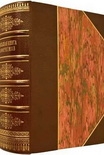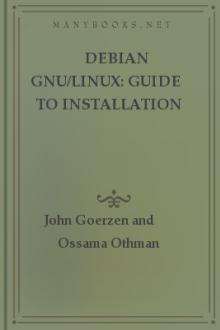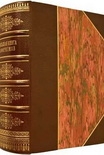Low Magick, Lon DuQuette [best ebook reader ubuntu .TXT] 📗

- Author: Lon DuQuette
Book online «Low Magick, Lon DuQuette [best ebook reader ubuntu .TXT] 📗». Author Lon DuQuette
36 Silver and violet are both colors sacred to the Moon.
37 See chapter 11.
38 I thought it would be “heavy” and magical to do a magical operation during a lunar eclipse. I later would learn this is usually not the best time to work. Still, I lived through it.
39 Sun in the center, Saturn the top point, Jupiter upper right, Mars upper left, Venus lower right, Mercury lower left, and Luna at the bottom point.
six
A Weekend Alone with the Spirits of the Tarot40
You hold the universe in your hand when you pick up a deck of tarot cards.
Rabbi Lamed Ben Clifford
The creation and ritual “consummation” of my seven planetary talismans launched me on a wondrous magical adventure that I am only now (at the dawn of my reflective years) beginning to put in perspective. In the years that immediately followed that birthday immolation, I would unexpectedly undergo magical initiation at the hands of some of the last surviving personal students of Aleister Crowley, find myself leading a magical lodge, and become friends with many of the brightest magical minds in the world, including Robert Anton Wilson, Christopher S. Hyatt, and Francis (Israel) Regardie. I would undergo (one might say suffer) an Odyssean array of personal and magical ordeals, challenges, triumphs, and tragedies.
Among the subjects that captured my imagination (and spare time) in the first two decades of my journey was tarot and its relationship (at least in the minds of hermetic magicians) to the Qabalah. I realize that probably not everyone reading this book is familiar with tarot, but it is highly likely that many of you are. Those of you who read the cards for yourself or for others probably have a favorite deck that you’ve used for a long time—a deck you trust; a deck you’ve charged with your own personal essence and vibrations; a deck you’ve empowered through years of repeated use. If you do, it’s probably scuffed and dog-eared. Its edges are most likely filthy gray from years of skin-oil and dirt. It just might be a biohazard! I know many tarot readers whose cards are so flaccid they hardly make any noise when they are shuffled.
But, unattractive as your well-worn cards may be, you probably view them as old friends. You have a history together. You trust them. They are alive—perhaps more alive than you can imagine.
My first deck of tarot cards was one I painted myself as part of the marvelous Builders of the Adytum (B.O.T.A.)41 Tarot/Qabalah correspondence course back in the early 1970s. It was sort of a paint-by-numbers project (only without the numbers), and I had worked on only the twenty-two trumps. I didn’t attempt to read or divine with those cards because the lessons cautioned that one could cripple oneself spiritually by using the cards to tell fortunes. I took the warning seriously—for a while.
The deck I first used to read the cards was an early edition of the Thoth Tarot42 deck that I bought in 1972 at Pickwick Bookstore in Costa Mesa. I would use that deck exclusively for more than twenty years. I might still be using it but, as fate would have it, I would eventually create my own tarot deck, The Tarot of Ceremonial Magick,43 and I guess I would be a poor advertisement if I didn’t use my own deck. I would eventually come to realize that the creation of The Tarot of Ceremonial Magick was really a continuation and elaborate expansion of the magical operation that I started years earlier by creating my seven planetary talismans—for indeed, the tarot is one magnificent and complex talisman containing within its matrix all the usual suspects of the Western hermetic and magical traditions. Please don’t think that I am suggesting that, in order to successfully use the cards as a divinatory tool, a person has to be aware of all the astrological and magical virtues of the seventy-eight cards. In fact, I’d wager that the majority of tarot readers in the world couldn’t care less about the underlying magical principles, forces, and spirits inherent in the cards. Yes. I said spirits—but I’ll get to that in a moment.
Because it is built upon fundamental Qabalistic principles, tarot is in a very real way the graphic DNA of the hermetic arts that are also Qabalah-based, including astrology, alchemy, and several varieties of ceremonial magick. As such, tarot is (or should be) of special interest to magicians and would-be magicians.
If we could magically peek just below the slick surface and colored inks of tarot cards, we would see that every pack is a tidy little block of flats that houses a teeming world of angels, spirits, and demons. For centuries an odd assortment of obsessed holy guys (who obviously had a lot of time on their hands) identified, fingerprinted, and booked these spirit creatures, and with zealous and anal-retentive attention to detail, categorized them by their elemental, planetary, zodiacal, astrological, and other traditional correspondences. Then, with the ruthlessness of tenement landlords, these holy guys squeezed each of them into its appropriate place in the spiritual hierarchy of the cosmos—referenced and cross-referenced in mountains of ancient and modern tables, graphs, and charts. This information has always been implied by the structure of the tarot but, until I designed my deck, this information (or at least the major landmarks of this information) was never overtly displayed on a deck of tarot cards themselves. I wanted to make flash cards of pertinent data relating to Astrology and the two most widely practiced varieties of magick (Enochian44 and Goetia45), and that’s just what I did—first in crude,





Comments (0)